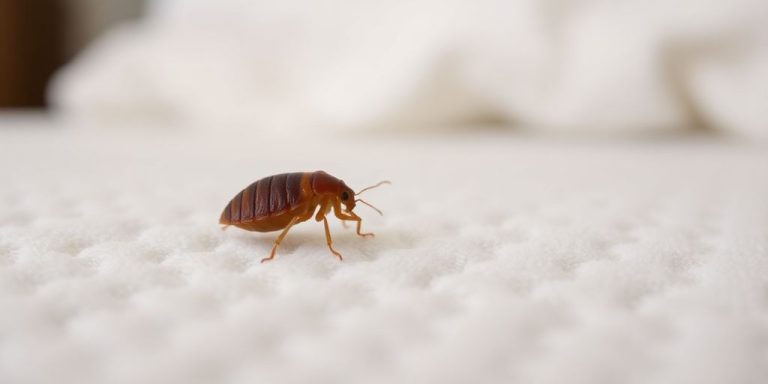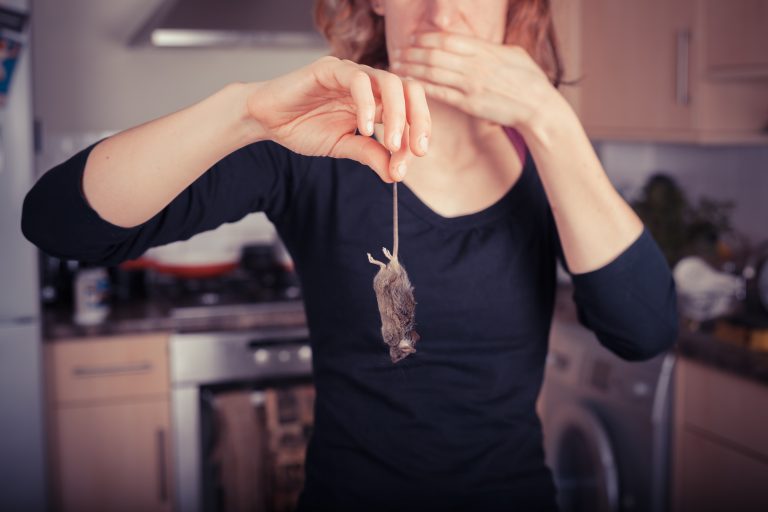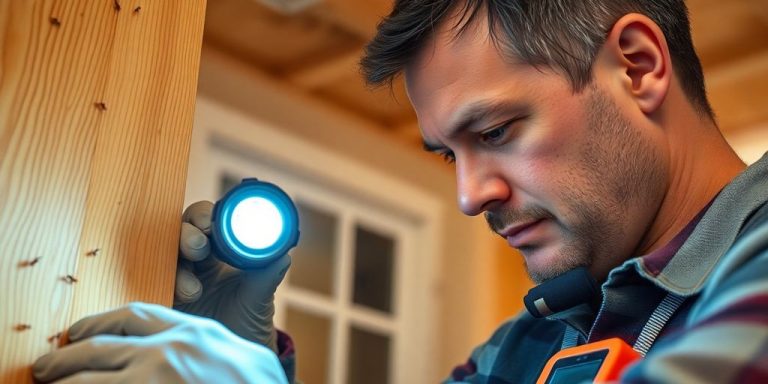Termites are some of the most damaging pests that can invade homes, leading to serious structural issues. Recognizing the signs of termite infestations early can help homeowners take action to prevent extensive damage. This guide will walk you through identifying these signs, understanding termite behavior, and exploring prevention and treatment options available to protect your home.
Key Takeaways
- Look for mud tubes, which termites use to travel and protect themselves.
- Check for termite droppings, known as frass, which resemble small pellets.
- Listen for hollow-sounding wood, a sign that termites may be eating from the inside.
- Identify discarded wings, which indicate the presence of swarming termites.
- Regular inspections and prompt action can save your home from severe damage.
Understanding Termite Behavior and Habitats

Termite Life Cycle and Development
Termites undergo a fascinating life cycle that includes several stages: eggs, nymphs, and adults. Each stage plays a crucial role in the colony’s survival. Understanding this cycle helps homeowners identify potential infestations early. Here’s a brief overview of the stages:
- Eggs: Laid by the queen, these hatch into nymphs.
- Nymphs: Young termites that will grow into adults.
- Adults: Divided into workers, soldiers, and swarmers, each with specific duties.
Common Habitats for Termite Colonies
Termites thrive in moist environments, making certain areas of a home more susceptible to infestations. Common habitats include:
- Near water pipes or leaky faucets
- In damp wood or soil
- Under poorly ventilated areas like basements or crawl spaces
How Termites Forage for Food
Termites are social insects that work together to find food, primarily wood. They build mud tubes to travel safely between their colony and food sources. These tubes protect them from predators and dry conditions. Homeowners should regularly check for these tubes, as they are a clear sign of termite activity.
By understanding where termites are likely to gather, homeowners can take proactive steps to prevent infestations.
Recognizing Early Signs of Termite Infestation

Identifying Mud Tubes and Their Significance
Mud tubes are one of the most noticeable signs of termite activity. These pencil-thin tunnels are built by termites to travel safely between their colony and food sources. Regularly check your home’s exterior for these tubes, especially in hidden areas like basements or crawl spaces. If you find them, it’s a clear indication that termites are nearby and action should be taken.
Spotting Termite Droppings and Frass
Termite droppings, known as frass, are another key sign of an infestation. These small, pellet-like droppings can often be found near termite nests or along baseboards. Look for tiny, wood-colored pellets that resemble sawdust. Finding frass is a strong indicator that termites are feeding on wood in your home.
Detecting Hollow-Sounding Wood
If you tap on wooden structures in your home and hear a hollow sound, it could mean that termites have been eating away at the wood from the inside. This is a serious sign of damage. Pay close attention to areas like beams, floors, and walls. If they sound less solid than they should, it’s time to investigate further.
By being vigilant and recognizing these signs, you can catch a termite infestation early and take the necessary steps to address the problem. It’s essential to act quickly to limit the damage and protect your home.
Common Types of Termites and Their Indicators
Differences Between Subterranean and Drywood Termites
Termites can be divided into two main types: subterranean and drywood termites. Subterranean termites live underground and build mud tubes to travel between their nests and food sources. In contrast, drywood termites live inside the wood they consume, making them harder to detect. Here are some key differences:
- Habitat: Subterranean termites require moisture and often infest homes from the ground up, while drywood termites can thrive in dry wood without needing contact with the soil.
- Signs of Infestation: Subterranean termites leave behind mud tubes, while drywood termites produce frass, which looks like small wood pellets.
- Swarming Behavior: Subterranean termites swarm in the spring, while drywood termites can swarm at various times throughout the year.
Identifying Swarmers and Discarded Wings
Swarmers are mature termites that leave their colonies to mate and establish new colonies. Finding discarded wings around your home can indicate a nearby infestation. Here’s what to look for:
- Location: Check windowsills, doorways, and other entry points for piles of wings.
- Appearance: The wings are typically translucent and resemble fish scales.
- Timing: Swarming usually occurs during warm, humid weather, often in the spring.
Understanding Termite Castes and Their Roles
Termite colonies are organized into castes, each with specific roles:
- Workers: These termites gather food and maintain the nest.
- Soldiers: They protect the colony from predators.
- Reproductives: These include swarmers and the queen, responsible for reproduction.
Understanding the roles of different termite castes can help you assess the severity of an infestation. By recognizing these signs, you can take action before the damage becomes severe.
By being aware of these indicators, homeowners can effectively monitor for termite activity and take necessary precautions to protect their homes from potential infestations.
Effective Termite Prevention Strategies
Maintaining Proper Drainage and Ventilation
To keep termites away, it’s important to ensure that water doesn’t collect around your home. Proper drainage helps prevent moisture buildup, which attracts termites. Here are some tips:
- Ensure gutters and downspouts direct water away from the foundation.
- Check for any leaks in pipes or faucets and fix them promptly.
- Maintain good ventilation in crawl spaces and attics to reduce humidity.
Reducing Wood-to-Soil Contact
Termites thrive in environments where wood is in contact with soil. To minimize this risk:
- Store firewood at least 20 feet away from your home.
- Use concrete or metal barriers for wooden structures.
- Avoid using mulch made from wood near the foundation.
Implementing Regular Home Inspections
Regular inspections can help catch termite problems early. Consider these steps:
- Schedule annual inspections with a pest control professional.
- Look for signs of termite activity, such as mud tubes or droppings.
- Inspect wooden structures for any signs of damage or decay.
By taking these preventive measures, homeowners can significantly reduce the risk of termite infestations, protecting their homes and investments.
In summary, effective termite prevention involves maintaining proper drainage, reducing wood-to-soil contact, and conducting regular inspections. These strategies create an environment that is less inviting to termites, helping to keep your home safe from these pests.
Professional Termite Treatment Options

When dealing with a termite problem, it’s crucial to explore various treatment options to find the best fit for your situation. Here are some common methods:
Chemical Treatments and Their Efficacy
- Liquid Termiticides: These are applied to the soil around your home to create a barrier that prevents termites from entering.
- Bait Systems: Bait stations are set up around your property to attract termites. The termites consume the bait and take it back to their colony, which helps eliminate the entire group.
- Fumigation: This method is used for severe infestations. It involves covering the entire structure and filling it with a gas that kills termites. This option requires you to leave your home temporarily.
Using Baiting Systems for Termite Control
Baiting systems are a popular choice because they are less invasive than some other methods. Here’s how they work:
- Bait stations are placed around the perimeter of your home.
- Termites are attracted to the bait and consume it.
- The poison is carried back to the colony, leading to its eventual collapse.
When to Consider Fumigation Services
Fumigation is a serious step and is usually considered when:
- There is a large infestation that cannot be controlled by other means.
- Termites are found in hard-to-reach areas of your home.
- You want to ensure complete elimination of termites.
Key Point: Always consult with a licensed pest control professional to determine the best treatment for your specific situation. They can provide tailored advice and ensure the safety of your home.
In summary, understanding the different professional treatment options available can help you make informed decisions about protecting your home from termites. Whether you choose chemical treatments, bait systems, or fumigation, professional help is essential for effective termite control.
DIY Solutions for Termite Prevention

Natural Remedies and Home Treatments
Taking care of your home means being aware of potential termite threats. Here are some effective natural solutions you can try:
- Boric Acid: This is a natural repellent and killer for termites. Sprinkle it around your property to keep them away.
- Beneficial Nematodes: These tiny worms can be introduced into the soil to target and eliminate termites.
- Diatomaceous Earth: Spread food-grade diatomaceous earth in areas where termites might enter. It works by drying them out and killing them.
Setting Up Monitoring Systems
To catch termite problems early, consider setting up monitoring systems:
- Bait Stations: Place these around your home to attract termites. They will take the poison back to their colony.
- Moisture Meters: Use these to check for damp areas in your home, as termites love moisture.
- Regular Inspections: Check your home regularly for signs of termites, such as mud tubes or damaged wood.
Addressing Moisture Issues Promptly
Moisture control is key to preventing termite infestations. Here are some steps to take:
- Fix any leaks in pipes or faucets.
- Ensure proper drainage around your home to keep the soil dry.
- Maintain good ventilation in basements and attics to reduce humidity.
By taking these proactive steps, you can help protect your home from termites and save money in the long run. Regular maintenance is essential to keep these pests at bay!
Assessing the Financial Impact of Termite Damage
Termite damage can lead to significant costs for homeowners. Understanding these costs is essential for effective management.
Cost Comparison: Professional vs. DIY Solutions
- Professional Treatment Costs: Hiring pest control experts can range from $200 to $2,500, depending on the severity of the infestation.
- DIY Solutions: Home remedies and treatments can cost between $50 and $300, but may not be as effective for severe infestations.
- Repair Costs: Repairing damage can vary widely, from a few hundred dollars for minor fixes to thousands for extensive structural repairs.
Understanding Insurance Coverage for Termite Damage
- Most homeowners’ insurance policies do not cover termite damage, as it is considered preventable.
- Homeowners should check their policy details to understand what is and isn’t covered.
- Investing in a termite warranty or protection plan can provide peace of mind and financial security.
Long-Term Costs of Untreated Infestations
- Increased Repair Costs: Damage worsens over time, leading to higher repair bills.
- Decreased Property Value: Homes with a history of termite damage may sell for less.
- Potential Safety Hazards: Structural weaknesses can pose risks to occupants.
Regular inspections and early detection are key to minimizing the financial impact of termite damage. By staying proactive, homeowners can protect their investments and avoid costly repairs.
Conclusion
In conclusion, being aware of the signs of termite infestations is crucial for every homeowner. By recognizing indicators like damaged wood, mud tubes, and droppings, you can catch these pests early and prevent serious damage to your home. Regular inspections and maintenance are key to keeping termites at bay. If you suspect an infestation, don’t hesitate to reach out to a pest control expert for help. Remember, taking action quickly can save you time, money, and stress in the long run. Stay informed and proactive to protect your home from these destructive insects.
Frequently Asked Questions
What are the main signs of a termite infestation?
The key signs include mud tubes on walls, hollow-sounding wood, and termite droppings that look like small pellets.
How can I prevent termites from invading my home?
You can prevent termites by keeping wood away from soil, fixing leaks, and ensuring proper drainage around your home.
What types of termites are common in homes?
The most common types are subterranean termites and drywood termites, each having unique habits and signs.
When should I call a pest control professional?
If you notice signs of termites or suspect an infestation, it’s best to contact a pest control expert right away.
Are there natural methods to deter termites?
Yes, some natural methods include using boric acid, orange oil, and maintaining dry conditions around your home.
How much damage can termites cause?
Termites can cause significant damage, weakening the structure of your home, which can be very costly to repair.



